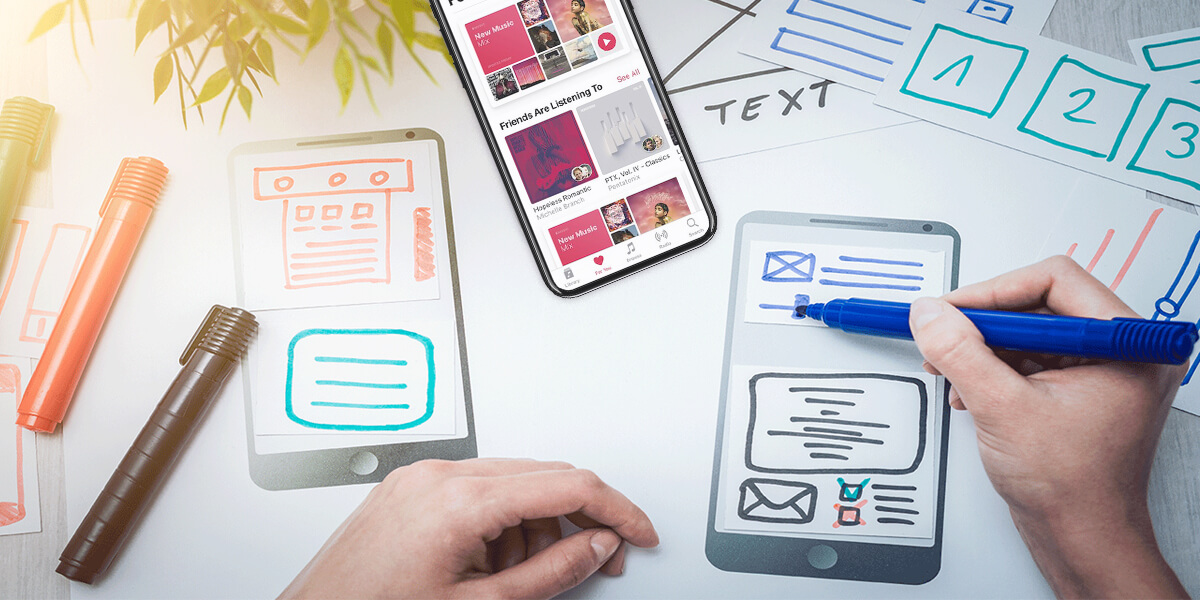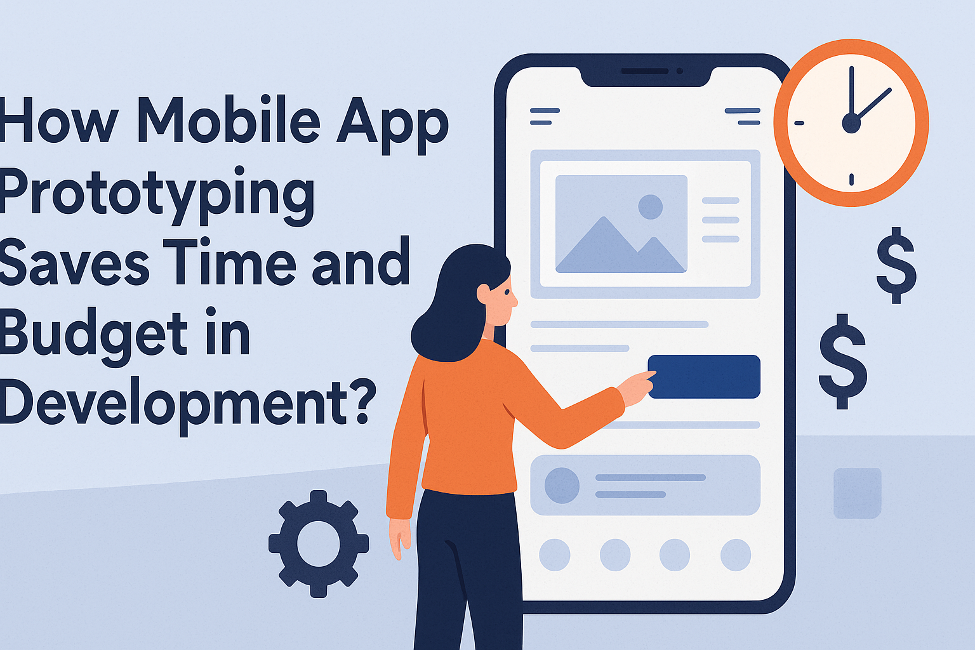Imagine spending months designing the ideal app only to find that, when it is developed, customers are annoyed by features that are slow to respond and navigation that is unclear. Not enjoyable, isn’t it? The difference between that nightmare and a seamless, useful app is the mobile app prototype.
Timelines and budgets must be managed while maintaining a seamless user experience for both startups and large corporations. Whether you’re a startup or a large corporation, managing timelines and budgets while ensuring a seamless user experience is essential. That’s why many businesses today rely on a mobile app development company to guide them through efficient prototyping and planning processes.

You can read this blog to learn how mobile app prototyping can save money and time at various app development phases.
Contents
- 1 I. Clearer Vision, Less Mistakes
- 2 II. Early Feedback & Early Fixes
- 3 III. Faster Development Cycles
- 4 IV. Better Resource Allocation
- 5 V. Better Communication Between Teams
- 6 VI. Reduced Development Time
- 7 VII. Enhanced User Experience (UX)
- 8 VIII. Improved Stakeholder Buy-in
- 9 IX.Easier Testing Before Development
- 10 X. Budget-Friendly for Startups and SMEs
- 11 Conclusion
I. Clearer Vision, Less Mistakes
Through prototyping, intangible concepts are turned into concrete images. Developers, designers, product owners, and customers all benefit from having a common concept of the end product’s appearance and functionality.
II. Early Feedback & Early Fixes
Early prototype presentations allow you to get insightful input from stakeholders and users. By doing this early validation, you can be sure that you’re not just developing the correct product, but the right one.
III. Faster Development Cycles
Developers know exactly what to do when they have a prototype that serves as a visual blueprint. This reduces uncertainty, increases implementation, and encourages improved front-end and back-end team coordination.
IV. Better Resource Allocation
Prototypes help in the early detection of possible issues, UI logic, and feature complexity. Product managers can better plan sprints and allocate resources like time, money, and personnel as a result.
V. Better Communication Between Teams
Rework and misaligned expectations can result from poor communication between developers, designers, and stakeholders. Stakeholders may offer more precise feedback, and developers have a better grasp of functionality and user processes. Working with a seasoned iOS app development company at this point might be quite beneficial. These businesses are knowledgeable about Apple’s design philosophies, user trends, and App Store policies. They can guarantee that your prototype is not only workable but also scalable and compliant with the iOS ecosystem.
VI. Reduced Development Time
An interactive, clearly specified prototype acts as a guide for developers, directing the development process. Developers can concentrate on execution rather than speculating about user intent by using prototypes to help define user journeys, UI elements, and interaction patterns beforehand. Development becomes quicker, more targeted, and less sensitive to back-and-forth adjustments. In addition to saving time, this reduces the overhead that comes with extended development cycles.
VII. Enhanced User Experience (UX)
Before launching, prototypes offer the ideal setting for testing and improving the user experience. You can test out various layouts, flows, and interaction styles to determine what works best for your users. Finding usability issues early on can be achieved by testing the prototype with actual users. By doing this, the finished software is guaranteed to be user-friendly and intuitive. This increases adoption rates and reduces post-release churn or negative feedback that would otherwise necessitate expensive changes or redesigns.
VIII. Improved Stakeholder Buy-in
When pitching your app idea to stakeholders or investors, a functional prototype is considerably more convincing than static presentations or documentation. It makes the idea come to life by showing how people would use the app and what issues it resolves. In addition to growing trust, this raises the possibility of obtaining funding or executive support. Decision-makers are more inclined to commit resources and approve your project more quickly and confidently when they can view and interact with a clickable prototype.
IX.Easier Testing Before Development
Prototyping enables testing to take place prior to writing a single line of code. Prototypes provide a risk-free setting for experimentation, whether it be for usability testing, A/B testing of flows, or obtaining user preferences. Development can be guided by the feedback gathered throughout this phase, guaranteeing that you’re creating features that users will genuinely need and utilize. This results in a more polished product and reduces the cost of resolving problems after launch.
X. Budget-Friendly for Startups and SMEs
Resources are frequently scarce for new and small enterprises. By concentrating primarily on things that bring value, prototyping helps small businesses to maximize their budget. They can prototype important features, get user input, and create the app gradually rather than creating the whole thing at once. This lean development methodology helps teams create apps that are both economical and efficient by avoiding consuming excess functionality.
Conclusion
Prototyping mobile apps is a strategic investment rather than only a design stage. It increases clarity, decreases rework, promotes better teamwork, and guarantees that you’re creating something that your users will want. Prototyping can be your best defense in a field where delays and cost overruns are frequent.
Additionally, you can be sure that your prototype turns into a high-performing cross-platform or native solution on schedule and under budget by collaborating with an expert Android app development company.


